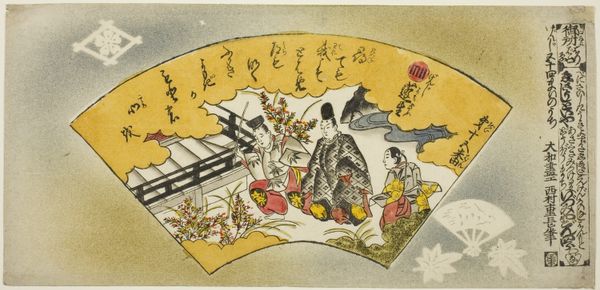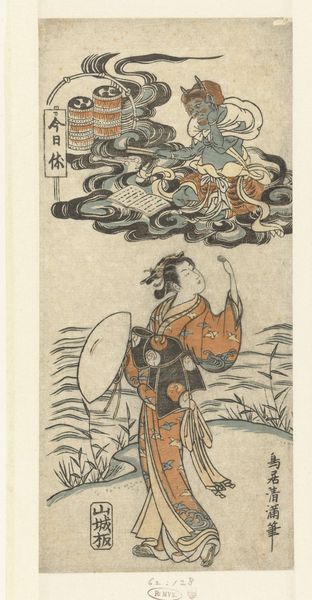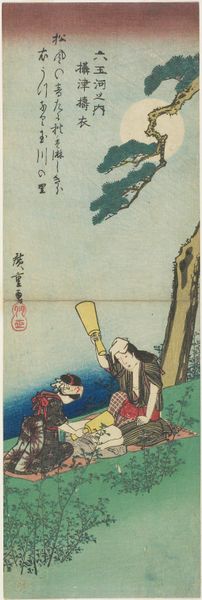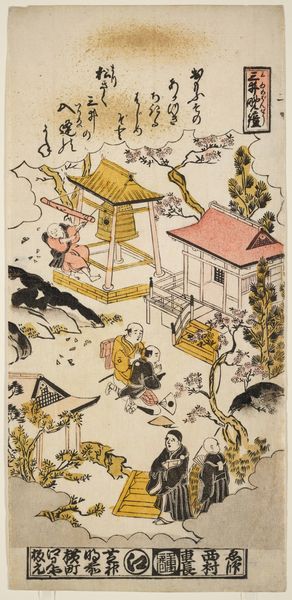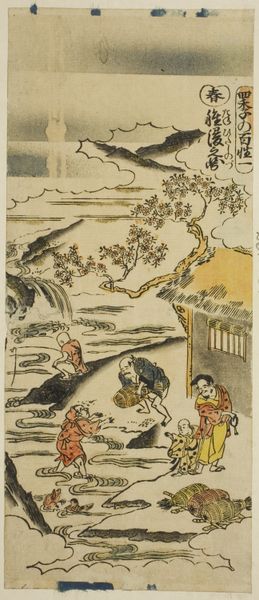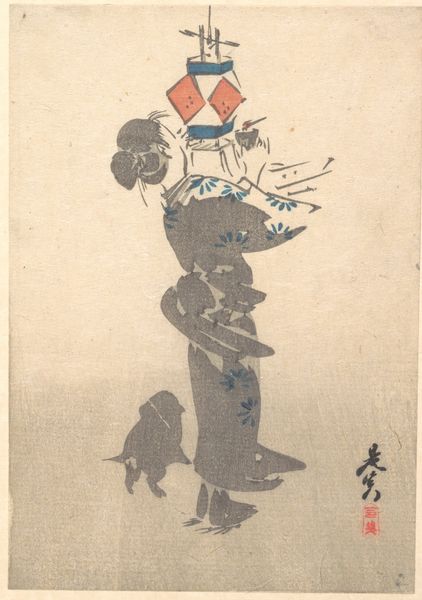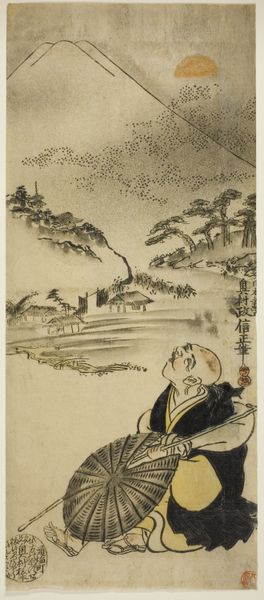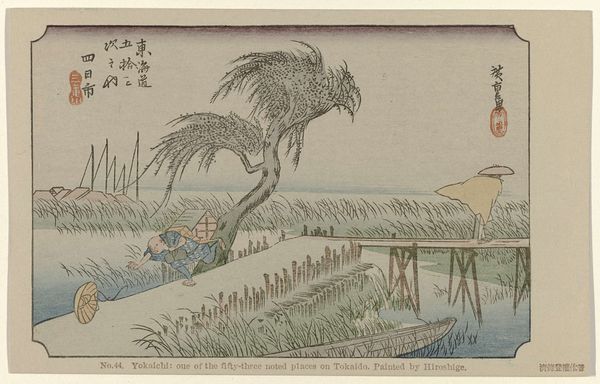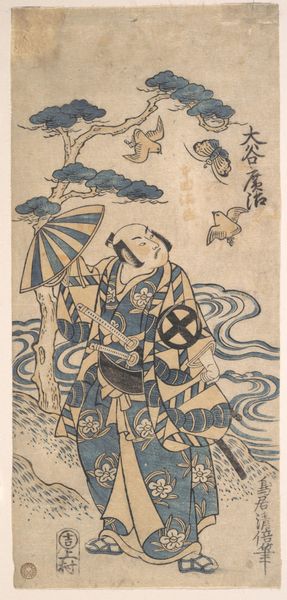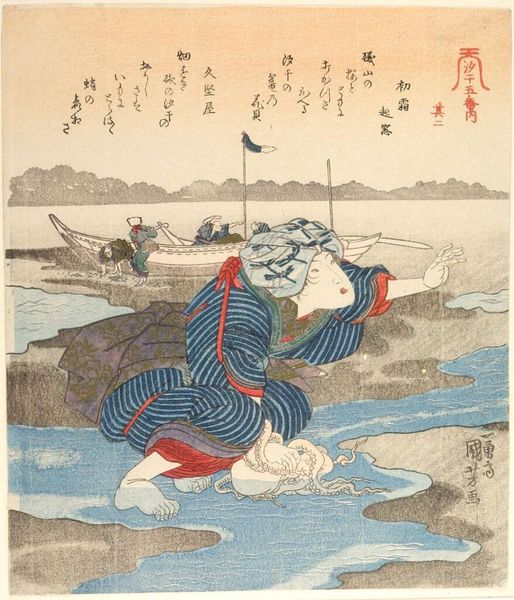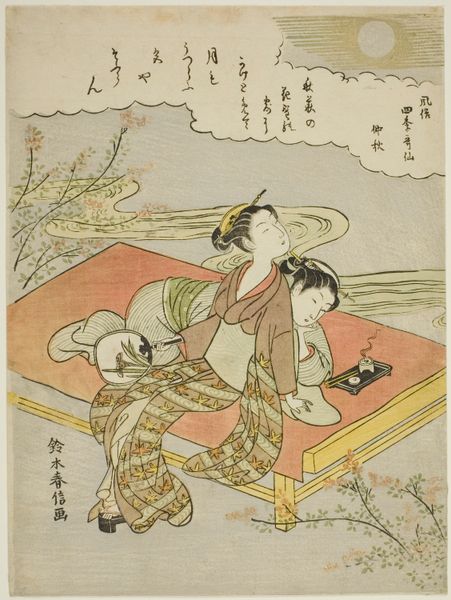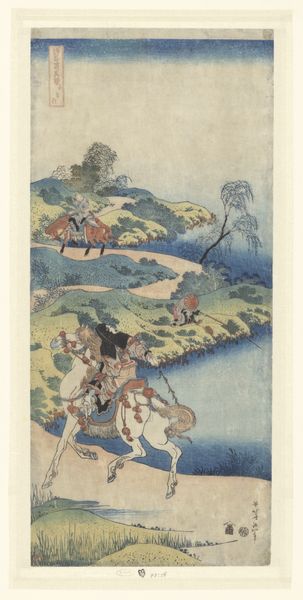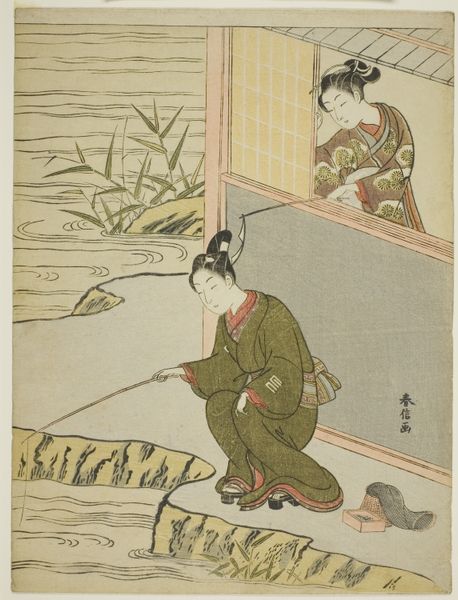
drawing, print, ink, woodblock-print
#
drawing
# print
#
asian-art
#
landscape
#
ukiyo-e
#
figuration
#
ink
#
woodblock-print
#
mountain
#
watercolor
Dimensions: height 307 mm, width 159 mm
Copyright: Rijks Museum: Open Domain
Curator: Here we have a Japanese woodblock print, created between 1720 and 1730 by Nishimura Shigenaga. It's titled "The poet-priest Saigyō Hōshi looking up at Mount Fuji". Editor: The upward gaze, the open mouth, and the seated pose – he’s enraptured. There's a strong spiritual longing emanating from the image; Mount Fuji dominating the composition seems almost…deified. Curator: Woodblock prints, or Ukiyo-e, were produced using a division of labor; an artist created the design, but specialized artisans carved the woodblocks and printed the final image. We can see the marks of the tools and process clearly here. Consider the different kinds of mark making, from the lines defining Mount Fuji itself to the looser groupings of dots depicting clouds, the linear river versus the thatched buildings... Editor: That figure of Saigyō Hōshi seems crucial; poets were highly revered figures, believed to tap into profound truths. Visually, the artist juxtaposes him – a man made humble before the immense scale of nature– against Mount Fuji. This mountain wasn't just geography, you know, it held intense spiritual and cultural significance; a symbol of Japan itself. Curator: Ukiyo-e prints catered to a rising merchant class. The demand shaped not just subject matter, but also production values. Speed and efficiency would've been crucial, impacting artistic choices. Cheaper inks and paper for mass appeal were prioritized in this context, with compositions quickly and efficiently completed, focusing on maximum output for workshops involved in printing. Editor: And it still holds symbolic power centuries later. Saigyō represents humanity, striving for enlightenment. Mount Fuji represents the ultimate ideal, serene, distant, and perfect. Curator: It is interesting to consider that, given the context of the creation of ukiyo-e. This print highlights the way commodities often accrue cultural value and resonance over time through use, display, and sheer survival. Editor: Indeed, thinking about how the initial purpose is inevitably transformed. For me, it's the lasting symbol of spiritual longing which echoes down through the ages that truly captivates. Curator: It becomes more complex when thinking through those interwoven forces.
Comments
No comments
Be the first to comment and join the conversation on the ultimate creative platform.
